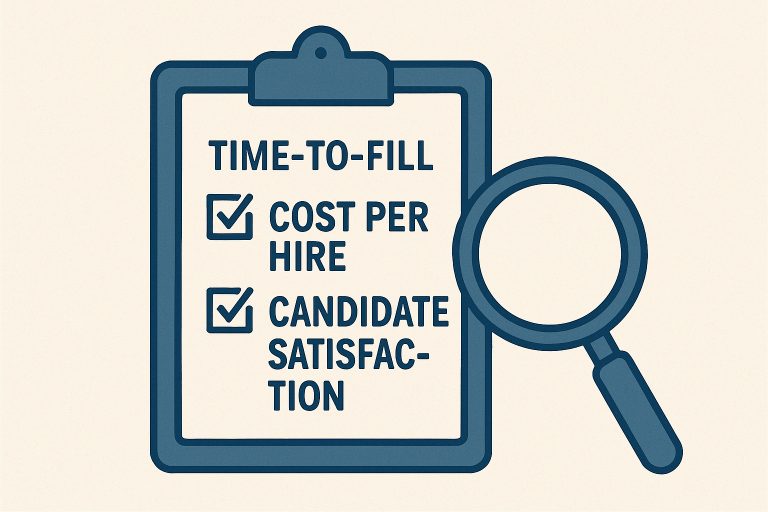Table of Contents
- Why Track Recruitment KPIs?
- Top Metrics That Matter in Hiring
- Balancing Speed and Quality in Recruitment
- Real-World Results from KPI Tracking
- Common Pitfalls and How to Avoid Them
- Technology Tools to Streamline KPI Monitoring
- Steps to Implement Better KPI Strategies
- Closing Thoughts
Key Takeaways
- Recruitment KPIs offer actionable data for hiring improvements and more intelligent decision-making.
- Tracking a balanced set of metrics, from time-to-fill to cost per hire, improves hiring outcomes.
- Data-driven recruitment strategies can support both efficiency and candidate experience.
- Modern HR teams use recruitment KPIs to stay competitive and agile in talent acquisition.
- Even small shifts in tracking or interpretation can lead to significant process improvements.
Why Track Recruitment KPIs?
In today’s competitive talent landscape, tracking recruitment KPIs is essential for optimizing every stage of the hiring process. These key performance indicators allow organizations to identify bottlenecks, streamline recruiter workflows, and ensure each hire is based on reliable data. Understanding which metrics to watch not only uncovers inefficiencies but also reveals opportunities for improvement. For specific and actionable recruitment KPIs examples, it’s important to establish the metrics that most closely align with your organizational hiring goals. When KPIs are properly aligned with business needs, HR leaders can pivot quickly and make decisions backed by hard evidence.
According to industry research, a measured approach to recruitment leads to higher-performing teams and better employee retention. Instead of relying on intuition or outdated processes, organizations that harness data from recruitment KPIs create more predictable, consistent outcomes and reduce costly hiring mistakes. The use of robust metrics empowers talent acquisition teams to connect data with real hiring challenges, supporting continuous improvement.
Top Metrics That Matter in Hiring
The metrics you track can make or break your recruitment strategy. Some of the most impactful KPIs include time-to-fill, which measures the days it takes to fill a position; candidate satisfaction rate, which assesses the quality of the candidate experience; quality of hire, which examines post-hire success; and cost per hire, which quantifies the financial investment required for each recruitment. Selecting the right metrics should align with your hiring objectives and workforce needs.
Organizations often see the most rapid improvements by benchmarking these KPIs over time and setting realistic, measurable goals. For example, if time-to-fill is consistently high, the organization can investigate stages in the funnel that cause delays. Similarly, monitoring candidate satisfaction can highlight the steps in the process where the experience falters, allowing for targeted improvements that benefit both the employer and future candidates.
Keeping a close watch on fundamental hiring metrics also ensures alignment across HR, hiring managers, and leadership, facilitating more seamless collaboration. Regular KPI tracking helps establish accountability and transparency, both of which are crucial for effective workforce planning and budgeting.
Balancing Speed and Quality in Recruitment
One of the critical challenges in hiring is achieving a balance between speed and quality. Rushing to fill positions may result in mismatches, higher turnover, and greater costs over time, while moving too slowly can mean passing up ideal candidates to more agile competitors. KPI data allows organizations to monitor both pace and effectiveness simultaneously. For instance, reducing time-to-hire is beneficial only if it doesn’t compromise the quality of hire or candidate experience.
By regularly analyzing outcome metrics alongside process measures, HR teams can find the optimal point where efficiency and effectiveness meet. This approach supports not only faster hiring but also hiring that consistently results in high-caliber employees who stay and thrive, ultimately enhancing organizational performance.
Common Pitfalls and How to Avoid Them
- Overemphasis on Single Metrics: Relying solely on metrics such as time-to-fill without considering overall quality can undermine your results.
- Ignoring Candidate Experience: Overlooking feedback and satisfaction metrics can lead to missed insights and harm employer reputation.
- Misinterpreting Data: KPIs can vary widely between locations, roles, and teams—nuanced interpretation is key.
The most successful organizations adopt a holistic approach to KPI analysis, considering data in context and evaluating both individual KPIs and their collective impact on business outcomes.
Technology Tools to Streamline KPI Monitoring
Leveraging modern HR technology is essential for effective KPI tracking. Applicant tracking systems (ATS) automate data collection at every stage of recruitment, while survey platforms capture candidate feedback systematically. Many leading platforms offer real-time analytical dashboards, allowing HR professionals to monitor active searches and adjust strategies as needed. Automation reduces manual errors and creates a more robust, centralized source of truth for all recruitment activities.
Additionally, integrating recruitment KPIs into broader HR analytics platforms enables organizations to compare their hiring performance with industry benchmarks and labor market data, ensuring that internal efforts remain competitive and agile.
Steps to Implement Better KPI Strategies
- Define clear recruitment goals that support your business’s strategic direction and growth plans.
- Select a diverse mix of KPIs that measure both process efficiency and the quality of outcome, like time-to-fill and candidate experience.
- Establish regular intervals—monthly or quarterly—for KPI review and assign clear ownership of each metric to specific team members.
- Act on gleaned insights by updating processes, investing in training, or adjusting recruitment channels as needed.
- Periodically review and update your KPIs to reflect evolving talent needs, business objectives, and industry best practices.
Closing Thoughts
When leveraged strategically, recruitment KPIs enable HR teams to elevate hiring from a reactive process to a proactive engine for organizational growth. A balanced KPI strategy focused equally on efficiency, experience, and quality ensures that recruitment delivers both speed and the right fit every time. Measuring what matters—and acting on the resulting insights—helps secure and retain world-class talent, providing a significant competitive edge, regardless of how dynamic the talent market becomes.


